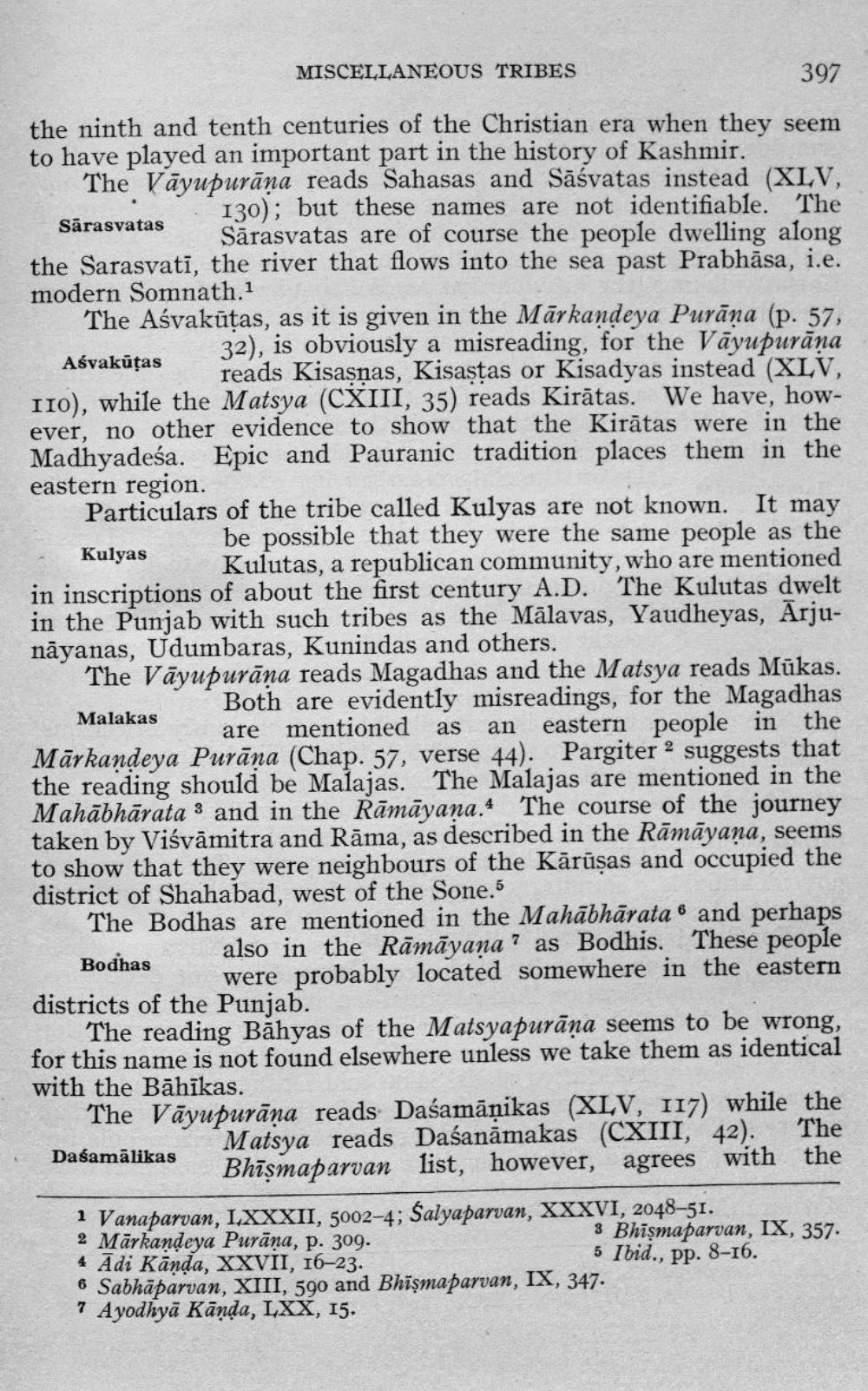________________
MISCELLANEOUS TRIBES
397
the ninth and tenth centuries of the Christian era when they seem to have played an important part in the history of Kashmir. The Vāyupurāna reads Sahasas and Sāśvatas instead (XLV,
130); but these names are not identifiable. The Sārasvatas
48 Sārasvatas are of course the people dwelling along the Sarasvati, the river that flows into the sea past Prabhāsa, i.e. modern Somnath.1 The Aśvakūtas, as it is given in the Mārkandeya Purāna (p. 57,
32), is obviously a misreading, for the Vāyupurāna Asvakūtas
as reads Kisasnas, Kisastas or Kisadyas instead (XLV, 110), while the Matsya (CXIII, 35) reads Kirātas. We have, however, no other evidence to show that the Kirātas were in the Madhyadeśa. Epic and Pauranic tradition places them in the eastern region. Particulars of the tribe called Kulyas are not known. It may
be possible that they were the same people as the Kulyas
Kulutas, a republican community, who are mentioned in inscriptions of about the first century A.D. The Kulutas dwelt in the Punjab with such tribes as the Mālavas, Yaudheyas, Ārjunāyanas, Udumbaras, Kunindas and others. The Vāyupurāna reads Magadhas and the Matsya reads Mūkas.
* Both are evidently misreadings, for the Magadhas Malakas
ses are mentioned as an eastern people in the Mārkandeya Purāna (Chap. 57, verse 44). Pargiter 2 suggests that the reading should be Malajas. The Malajas are mentioned in the Mahābhārata 3 and in the Rāmāyaṇa. The course of the journey taken by Viśvāmitra and Rāma, as described in the Rāmāyaṇa, seems to show that they were neighbours of the Kārūsas and occupied the district of Shahabad, west of the Sone.5 The Bodhas are mentioned in the Mahābhārata 6 and perhaps
also in the Rāmāyana ? as Bodhis. These people Bodhas
were probably located somewhere in the eastern districts of the Punjab.
The reading Băhyas of the Matsyapurāna seems to be wrong, for this name is not found elsewhere unless we take them as identical with the Bāhīkas. The Vāyupurāna reads Daśamāņikas (XLV, 117) while the
Matsya reads Dašanāmakas (CXIII, 42). The Daśamālikas
Bhīşmaparvan list, however, agrees with the 1 Vanaparvan, LXXXII, 5002-4; Salyaparvan, XXXVI, 2048-51. 2 Mārkandeya Purāna, p. 309.
3 Bhīşmaparvan, IX, 357. 4 Adi Kānda, XXVII, 16–23.
5 Ibid., pp. 8–16. 6 Sabhāparvan, XIII, 590 and Bhīşmaparvan, IX, 347. 7 Ayodhyā Kānda, LXX, 15.




